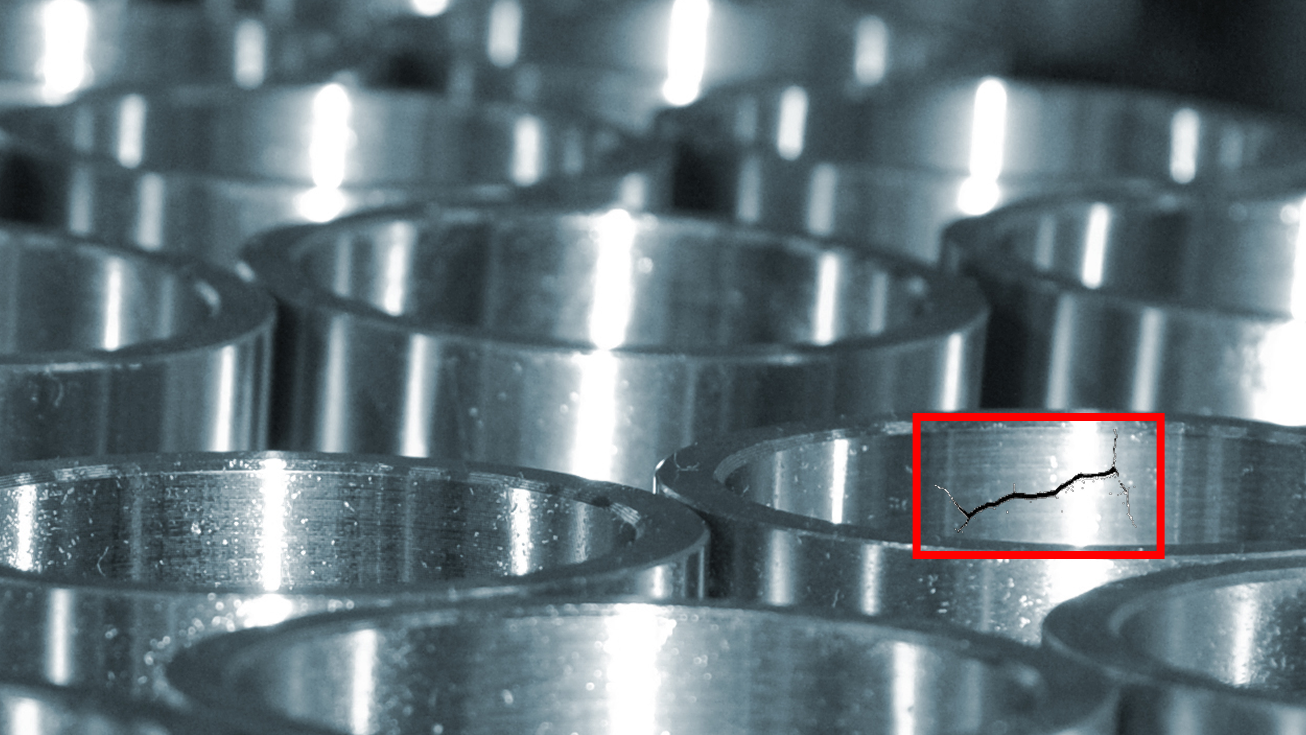Surface defects are one of the most persistent challenges in steel and metal manufacturing. From scratches and dents to inclusions and cracks, even the smallest anomaly can compromise product quality, increase rework costs, and damage customer trust. Traditional inspection methods – whether human visual checks or legacy machine vision – often fall short in meeting the speed, precision, and scale of modern manufacturing demands.
The good news? Advances in AI-powered visual inspection are closing that gap. By leveraging deep learning and computer vision, steel and metal manufacturers can now detect defects earlier, more accurately, and at production-line speeds – helping them reduce waste, improve throughput, and strengthen compliance.
In this article, we’ll explore how AI-driven surface defect detection is transforming the steel and metal industries, where the biggest opportunities lie, and how solutions like Akridata’s Vision Assist, Vision Command, and Vision Copilot enable manufacturers to embed smarter inspection into their workflows.
Why Surface Defects Are a Persistent Problem
The steel and metals industry operates on razor-thin margins, where quality lapses can ripple into significant costs. Consider these challenges:
- High material value: Defects in rolled steel, aluminum sheets, or specialized alloys often mean scrapping expensive material.
- Process complexity: From casting and rolling to coating and finishing, every stage introduces potential defects.
- Speed and scale: Production lines operate at thousands of meters per minute, making manual inspection impractical.
- Customer expectations: Automotive, aerospace, and construction clients demand near-zero defects, with strict compliance requirements.
A single undetected surface crack can compromise structural integrity, while cosmetic defects can lead to costly downgrades or customer rejections. This makes real-time, accurate, and automated defect detection not just a value-add, but a necessity.
The Limits of Manual and Rule-Based Inspection
For decades, manufacturers have relied on two main methods:
- Manual visual inspection: Skilled operators monitor the line, flagging visible defects. While flexible, this method is labor-intensive, inconsistent, and error-prone – especially in high-speed environments.
- Rule-based machine vision: Cameras paired with predefined thresholds or pattern-matching rules. While faster than humans, these systems struggle with variability in lighting or other environment variables,,, and evolving defect types.
Both approaches fall short in delivering the precision, adaptability, and traceability demanded by today’s global supply chains.
How AI Visual Inspection Changes the Game
AI-powered visual inspection, driven by deep learning and multimodal data, overcomes these limitations by learning directly from defect samples – real or synthetic. Instead of hardcoding rules, AI systems can identify subtle variations and generalize across complex surfaces.
Key advantages include:
- Higher accuracy: Detects micro-level cracks, scratches, and inclusions invisible to the human eye.
- Real-time detection: Keeps up with high-speed production lines without slowing throughput.
- Adaptability: Learns new defect types as they emerge, without reprogramming.
- Traceability: Links inspection results to specific batches or units for compliance and audits.
This shift doesn’t just improve QA. It reduces waste, shortens root-cause investigations, and increases trust across OEM-supplier relationships.
Applications in Steel and Metal Industries
AI-powered defect detection is already delivering measurable benefits across multiple applications:
1. Hot Rolling and Cold Rolling Mills
Cracks, scale, and inclusion defects often emerge during rolling. AI visual inspection identifies anomalies in real-time, allowing operators to intervene before defects propagate downstream.
2. Sheet Metal and Coating Lines
Coatings like galvanization and painting introduce risks of uneven layers, bubbles, or surface contamination. AI inspection ensures uniformity and flags deviations instantly.
3. Pipes, Rods, and Tubes
For cylindrical products, surface scratches or dents compromise structural performance. AI-driven 360° inspection systems ensure consistent quality.
4. Automotive and Aerospace Components
These industries demand extremely tight tolerances. AI inspection helps ensure defect-free components, protecting both safety and brand reputation.
Strengthening the QA Chain with Akridata
Akridata’s AI-powered visual inspection solutions are built specifically to address the challenges of surface defect detection in industries like steel and metals. Here’s how our products fit into the workflow:
Vision Assist
A next-gen AI visual inspection system for manufacturing quality control, Vision Assist transforms traditional inspection by combining deep learning with real-time computer vision. For steel and metal manufacturers, it means:
- Detecting subtle surface defects faster and more reliably than human inspectors.
- Reducing costly rework and scrap.
- Boosting throughput without compromising quality.
By embedding Vision Assist into your production line, you gain an intelligent layer of automated quality control that keeps pace with even the fastest operations.
Vision Command
Inspection doesn’t end with defect detection – it requires monitoring, compliance, and decision support. Vision Command provides:
- Centralized oversight of defect trends and QA data.
- Automated compliance audit trails for regulated industries.
- Real-time alerts and dashboards that empower smarter decisions.
For steel and metals, where regulatory standards and customer audits are routine, Vision Command ensures every defect – or the lack thereof – is documented, traceable, and defensible.
Vision Copilot
Training AI models for defect detection requires large volumes of clean, representative data. Vision Copilot accelerates this by offering:
- Collaborative tools for data visualization and curation.
- Realistic synthetic data generation to expand scarce defect datasets.
- Faster iteration cycles for building accurate inspection models.
For manufacturers, this means your AI models improve continuously – staying ahead of new defect patterns without slowing operations.
Beyond Detection: Driving Business Value
The benefits of AI inspection extend well beyond the QA department:
- Cost savings: Less scrap, rework, and downtime.
- Operational efficiency: Real-time insights speed up corrective action.
- Customer trust: Consistently defect-free deliveries strengthen OEM relationships.
- Compliance readiness: Digital QA logs simplify audits and protect against penalties.
In a sector where quality lapses can cost millions, AI inspection isn’t just about defect detection – it’s about preserving competitiveness and profitability.
Closing the Surface Defect Gap
AI-powered visual inspection is transforming how the steel and metals industry tackles surface defects – bringing precision, consistency, and scalability to every stage of production. With Akridata’s integrated ecosystem – Vision Assist for real-time detection, Vision Command for compliance-ready monitoring, and Vision Copilot for intelligent data preparation – manufacturers can achieve a truly closed-loop inspection workflow.
By adopting AI-driven inspection today, manufacturers can minimize waste, strengthen compliance, and stay ahead in an industry where accuracy and efficiency define success.



No Responses